I’ve spent years wrestling with pipes, fittings, and the occasional stubborn leak, so when push-to-connect fittings like AquaLock and SharkBite hit the scene, I was intrigued.
These game-changers promise quick, tool-free connections, but which one truly holds up?
In this article, I’ll share my hands-on experience, breaking down the pros and cons of AquaLock and SharkBite. You’ll get a clear comparison to help you decide which is best for your plumbing project, whether you’re a DIY enthusiast or a seasoned pro.
A Brief Comparison Table
| Feature | AquaLock | SharkBite |
| Manufacturer | Watts (HB Group) | RWC (Cash Acme) |
| Material | Engineered composite plastic, stainless steel grip ring | Lead-free brass or plastic, stainless steel teeth, nitrile O-ring |
| Pipe Compatibility | PEX, Copper, CPVC, PE-RT | PEX, Copper, CPVC, PE-RT, HDPE |
| Introduced | 2015 | 2004 |
| Connection Type | Push-to-connect | Push-to-connect, some twist-to-lock |
| Max Pressure | Up to 2000 PSI (per tests) | Up to 750 PSI (per tests) |
| Max Temperature | 200°F (varies by series) | 200°F (brass), 180°F (plastic) |
| Vibration Tolerance | High (marine-focused design) | Moderate (less vibration-resistant) |
| Cost | Moderately priced | Higher upfront cost |
| Warranty | Varies by product, up to 75 years | 25 years (when installed correctly) |
| Availability | Common at Menards, marine distributors | Widely available (Home Depot, Lowe’s) |
My Journey With Push-to-Connect Fittings
As a plumber, I’ve seen my fair share of sweaty copper pipes and finicky compression fittings. When push-to-connect fittings came along, I was skeptical but curious. No torch? No glue? Just push and go? It sounded too good to be true.
My first encounter was with SharkBite, a name that’s practically synonymous with push-to-connect tech. Later, I stumbled across AquaLock while browsing Menards for a boat plumbing project. Both brands promised to make my life easier, but they each brought something different to the table.
Let’s break it down.
Understanding AquaLock: The New Kid On The Block
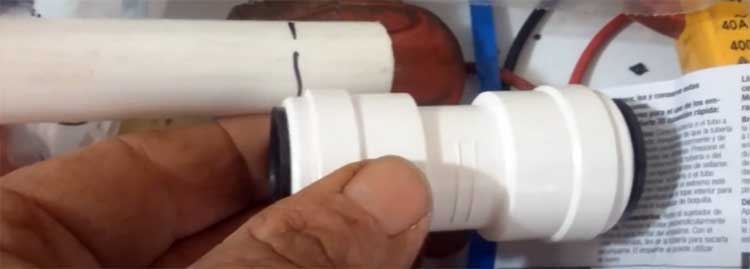
AquaLock, manufactured by Watts (formerly SeaTech under HB Group), hit the market in 2015. It’s designed with a focus on marine applications, which caught my attention since boats endure constant vibration and harsh conditions.
The fittings are made from engineered composite plastic with a stainless steel grip ring, which locks onto pipes like a determined terrier. The O-ring inside creates a watertight seal, and the whole setup requires no tools—just a clean cut and a firm push.
What I love about AquaLock is its versatility. It works with PEX, copper, CPVC, and PE-RT pipes, so I don’t need to stock a dozen different fittings for every job. I’ve used it in tight spaces, like behind a yacht’s water heater, where soldering would’ve been a nightmare.
The fittings come in both imperial and metric sizes, which is a lifesaver for boats with non-standard piping. Plus, AquaLock’s design claims superior vibration tolerance, which I’ve found holds up in marine environments where pipes are constantly jostled.
Pros of AquaLock
Let’s talk about what makes AquaLock shine. First, its vibration tolerance is a standout. On a recent boat plumbing job, I used AquaLock fittings to connect a live well system.
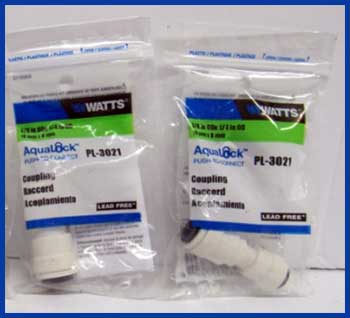
Despite the constant rocking and engine vibrations, those fittings haven’t budged or leaked in over a year.
The stainless steel grip ring feels robust, and the composite plastic body is corrosion-resistant, which is critical in salty marine environments.
Another big win is the pressure rating.
Tests suggest AquaLock can handle up to 2000 PSI, which is overkill for most residential jobs but gives me confidence in high-stakes applications.
The fittings are also moderately priced compared to SharkBite, making them a budget-friendly option for larger projects. I’ve found them especially cost-effective when buying in bulk for marine distributors.
AquaLock’s ease of use is another plus. The push-to-connect mechanism is smooth, and the fittings are forgiving if your pipe cut isn’t perfectly square. I’ve also noticed that AquaLock’s metric compatibility makes it a go-to for international or specialty projects, like retrofitting a Taiwanese-built yacht.
Cons of AquaLock
But AquaLock isn’t perfect. Its relative newness means it’s not as widely available as SharkBite. I often have to order online or hunt down a Menards, which can be a hassle mid-project.
The plastic body, while durable, doesn’t inspire the same confidence as brass for high-pressure systems. I’ve had one instance where a plastic AquaLock end cap failed to seal properly, though that might’ve been due to a burr on the pipe I overlooked.
Another downside is the learning curve for disconnecting. While it’s tool-free, you need a special release tool to disengage the grip ring, and it can be tricky in tight spaces. I’ve also heard mixed feedback about long-term durability in non-marine settings, though I haven’t seen issues myself.
SharkBite: The Industry Heavyweight
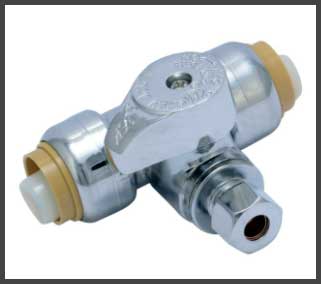
SharkBite, produced by RWC under the Cash Acme brand, has been around since 2004.
It’s the go-to for many plumbers and DIYers, and for good reason—it’s widely available and reliable.
SharkBite fittings come in two flavors: brass (lead-free) and plastic.
The brass version, with its stainless steel teeth and nitrile rubber O-ring, is a beast for high-pressure and high-temperature applications.
The plastic version, like ProLock, is lighter and cheaper but better suited for less demanding tasks.
My first SharkBite job was a quick sink repair under a kitchen counter. I was amazed at how fast I could connect a PEX line to a copper stub-out—no torch, no fuss. The stainless steel teeth grip the pipe tightly, and the O-ring seals it up.
SharkBite’s push-to-connect system is so intuitive that even my neighbor, who’s never touched a wrench, could probably figure it out. They also offer a twist-to-lock option with ProLock for PEX and PE-RT, which adds an extra layer of security.
Pros of SharkBite
SharkBite’s biggest strength is its reputation. After 20 years on the market, it’s a trusted name, and you can find it at every Home Depot or Lowe’s. This accessibility is a lifesaver when you’re on a job and realize you’re short a coupling.
The brass fittings are particularly impressive, handling high temperatures (up to 200°F) and pressures (up to 750 PSI in tests). I’ve used them for hot water heater installations, and they’ve never let me down.
The push-to-connect design is foolproof, and the addition of twist-to-lock ProLock fittings for PEX gives extra peace of mind. SharkBite’s compatibility with HDPE, alongside PEX, copper, CPVC, and PE-RT, makes it incredibly versatile.
I also appreciate the range of fittings—straight couplings, elbows, tees, caps, even garden valves. It’s like a Lego set for plumbers.
For DIYers, SharkBite is a dream. I once coached a friend through a toilet shut-off valve replacement over the phone, and he had it done in 10 minutes with a SharkBite fitting. The included depth gauge and deburring tool make prep a breeze, ensuring a leak-free connection every time.
Cons of SharkBite
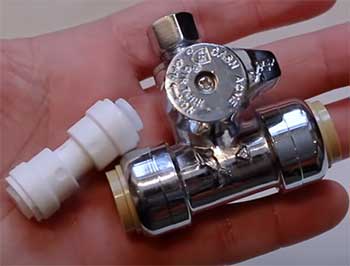
SharkBite’s biggest drawback is cost.
Those brass fittings aren’t cheap, and if you’re plumbing an entire house, the bill adds up fast.
I’ve also had issues with plastic SharkBite fittings, like ProLock, in high-pressure scenarios.
On one job, a plastic coupling popped off under pressure, creating a mess.
It was my fault for not double-checking the pipe prep, but it made me wary of plastic options.
Another concern is long-term reliability. The rubber O-ring, while durable, can degrade if exposed to UV light or extreme conditions, making SharkBite less ideal for outdoor use.
I’ve also heard plumbers grumble about SharkBite’s suitability for permanent installations, especially behind walls, due to potential O-ring wear over decades.
Quality control has been a sore spot too. On a house project, I found a batch of SharkBite fittings with missing or malformed components. It was a rare fluke, but it shook my confidence. Replacing them with another brand solved the issue, but it was a reminder to inspect every fitting.
Head-to-Head Comparison of AquaLock And SharkBite
Let’s put AquaLock and SharkBite under the microscope. Both are push-to-connect, so installation is a breeze—no soldering, no crimping, just cut and push.
AquaLock markets itself as the “easiest” solution, but I find SharkBite’s system just as intuitive, especially with the depth gauge. Where AquaLock pulls ahead is vibration tolerance, making it my pick for boats or RVs.
SharkBite, with its brass body, is better for high-temperature jobs like hot water lines.
Pressure-wise, AquaLock’s 2000 PSI rating trumps SharkBite’s 750 PSI, though most home plumbing doesn’t need that kind of muscle. Temperature ratings are similar, with both handling up to 200°F, but SharkBite’s plastic fittings cap out at 180°F.
Cost is another differentiator—SharkBite’s premium brass fittings cost more, while AquaLock’s plastic design keeps prices lower.
Availability is a big factor. SharkBite’s everywhere, while AquaLock requires some hunting. For marine projects, AquaLock’s metric sizing and vibration resistance give it an edge.
For general residential use, SharkBite’s brass durability and widespread availability make it the default choice.
Real-World Applications of AquaLock And SharkBite
I’ve used both brands in various scenarios, and each has its sweet spot. For a recent boat refit, AquaLock was my go-to. The fittings held up through rough seas and constant vibration, and the metric sizes matched the vessel’s piping perfectly.
On a residential job, I opted for SharkBite brass fittings to connect a new water heater to copper lines. The installation took minutes, and the brass body gave me confidence in its longevity.
For DIYers, SharkBite is the easier sell. Its availability and clear instructions make it accessible, even for novices. AquaLock, while user-friendly, requires more planning due to limited retail presence.
If you’re working in tight spaces or need vibration resistance, AquaLock’s design shines. For high-pressure or high-heat jobs, SharkBite’s brass fittings are hard to beat.
Durability and Longevity
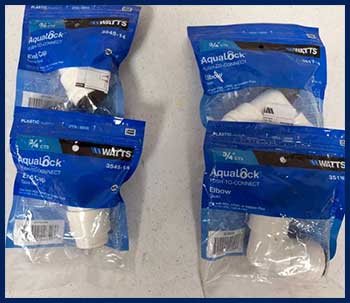
Durability is where plumbers get opinionated.
SharkBite’s brass fittings feel like they’ll outlast me, especially for copper or high-temperature applications.
AquaLock’s plastic body is sturdy but doesn’t have the same heft.
That said, AquaLock’s 75-year warranty (for some products) is impressive, though it requires proper installation.
SharkBite offers a 25-year warranty, which is solid but less ambitious.
The O-ring is the weak link for both. Over time, rubber can degrade, especially if exposed to sunlight or chemicals. I’ve seen SharkBite fittings fail in outdoor settings due to UV exposure, and while AquaLock’s black fittings are UV-resistant, I’d still avoid using either outside long-term.
For concealed installations, like behind walls, I lean toward soldered copper for peace of mind, but both brands are code-approved for such uses if installed correctly.
Cost Vs. Value
SharkBite’s higher upfront cost can sting, but the labor savings often balance it out. On a recent job, I used SharkBite to replumb a bathroom in half the time it would’ve taken with copper. The client paid more for materials but saved on my hours.
AquaLock’s lower cost is appealing for budget-conscious projects, especially in marine settings where you need dozens of fittings. However, if you’re only doing a small repair, the price difference might not matter much.
My Verdict
Choosing between AquaLock and SharkBite depends on your project. If you’re working on a boat or in a high-vibration environment, AquaLock’s design and metric compatibility make it a no-brainer.
For residential jobs, especially with copper or high temperatures, SharkBite’s brass fittings and wide availability win out. Both are reliable when installed properly, but SharkBite’s longer track record gives it a slight edge for general use.
For you, the decision comes down to priorities. Need something quick and widely available? Go SharkBite. Working on a boat or tight budget? AquaLock’s your pick. Either way, you’re getting a tool-free solution that’ll save you time and headaches.
Frequently Asked Questions (FAQ)
AquaLock fittings can last decades with proper installation, backed by warranties up to 75 years for some products. Durability depends on conditions like water quality and UV exposure.
Some plumbers distrust SharkBite for permanent installations due to potential O-ring degradation over time, preferring soldered connections for long-term reliability, especially in concealed spaces.
Yes, Watts AquaLock is reliable, especially for marine applications due to its vibration tolerance and corrosion-resistant design. It’s a solid choice for PEX, copper, and CPVC.
A class-action lawsuit against SharkBite alleged defective fittings due to O-ring failures causing leaks. It focused on early models, but newer fittings have improved designs.
Wrapping Up
You’ve got two solid options with AquaLock and SharkBite, each with unique strengths. AquaLock’s vibration resistance and budget-friendly price make it ideal for marine or specialty projects, while SharkBite’s brass durability and widespread availability suit most residential jobs.
Weigh your project’s needs—vibration, temperature, budget, and pipe type—and you’ll find the right fit. I’ve used both and can vouch for their ease and reliability when installed correctly. Pick what suits your situation, and you’ll be connecting pipes like a pro in no time.
